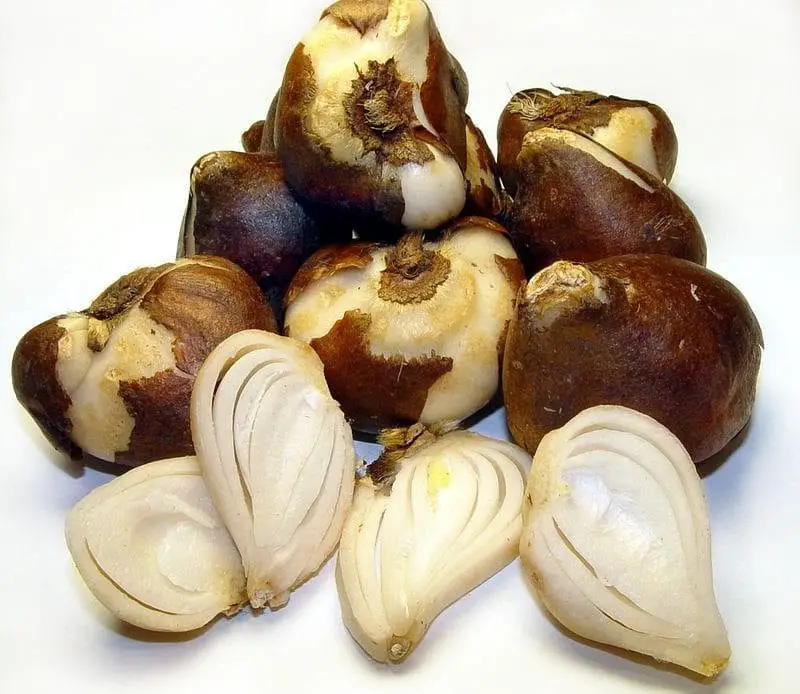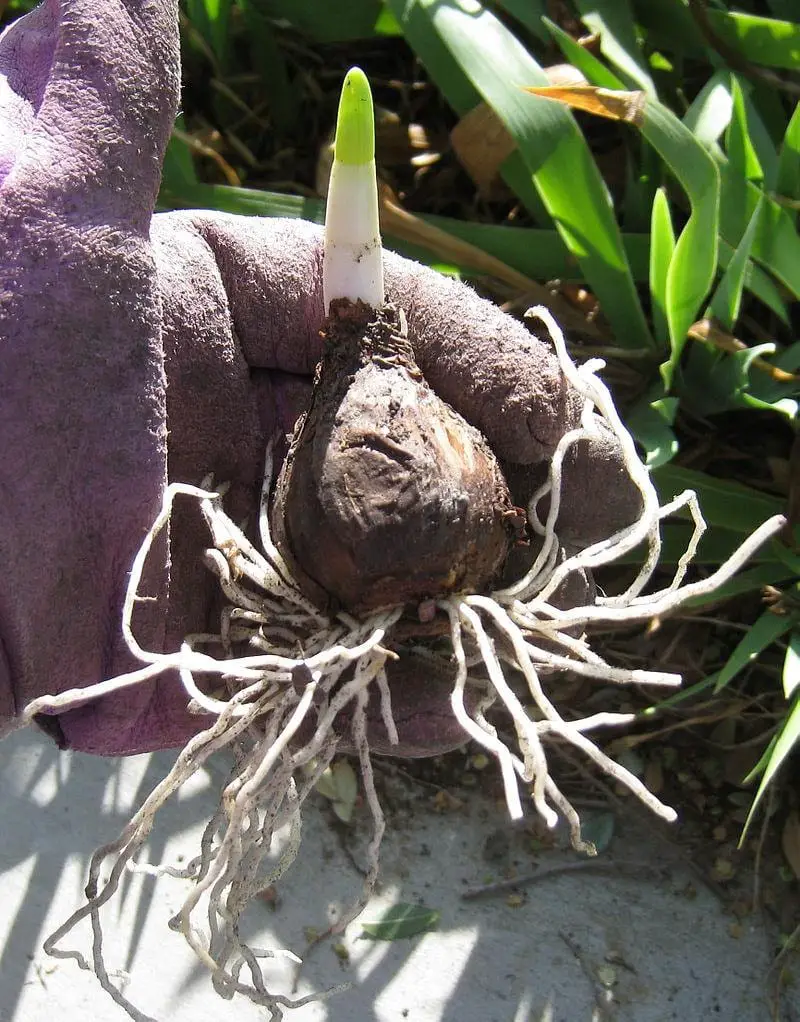
Bulbs bloom into flowers, year in and year out. They can store the energy a flower needs to grow, much like a battery stores power, and bloom in the next season. Bulbs are hardy to grow flowers out of. Whichever way you plant them (any and every direction), they will be sure to bloom anyway. In terms of an investment for your garden, they are an affordable option and can be stored carefully to give you additional flowers in every subsequent season. Some bulbs are edible, in case you didn’t know! These are the familiar leek, fennel, garlic and onion that we are so used to in our diets.
Winter bulbs are those that store energy from flowers and can be put into the ground in late summer and early in fall. This is so that flowers bloom in January and are mature by spring. Many lovely winter bulbs exist and caring for them requires some degree of meticulous tending to, but the effort is well worth it. The popular early bloomers that sprout from bulbs are Snowdrops, dainty and white. Winter Aconite flowers are also very pretty, offering an array of ground cover and look like a vibrant carpet of yellow. If you want a really elegant winter bulb, then the Snow Glory, with demure flowers in star shapes are ideal. Ground cover is fast and furious.
Hardy Bulbs
Growing flowers from bulbs is a better option than growing them from seedlings. Bulbs, by design, are resilient to cold winter climates. In fact, the natural biochemistry of a winter bulb depends on the icy cold weather to begin the natural process of its own growth. This compels the flower to bloom in the early months of the year, up to early spring. Bulbs do not freeze in winter, while soil may freeze deep in the ground. The temperature of the soil will remain at around 30 degrees Fahrenheit (-1.11 °C) or so. Cell fluid of the bulbs may freeze, but the cells will remain free from harm.
Processes in Bulbs
This is true for many tough plant varieties, as is true in winter bulbs, freezing temperatures tend to kick start the process of starch breakdown. Starch separates into a combination of glucose and other tiny nourishing molecules. The interaction of glucose and other minute molecules has an action that closely resembles salt that is applied to a winter road. Like the salt on the road, the glucose in the bulb makes the temperature at which water freezes lower.
Fortunately (for the winter bulb), this biochemical process aids in maintaining the safety of bulbs in a bed in winter gardens. It is important to note that snow actually acts as a natural insulation device. This factors in keeping bulbs snug in temperatures that the bulbs can tolerate. If you live in colder areas, you can add a layer of mulch to the bed in which the bulbs are planted. This can be done after you’re sure that the ground temperature has fallen to further limits.

Forgetting to Plant
When you buy flower bulbs that you want to plant as winter bulbs, you may have stored them in the basement in September or October. Then you may forget that they are there till late December! Don’t worry, the rule of thumb is to plant them in the ground anyway. It may not be as late as you think, and the bulbs will still bloom. While planting, look for parts of the ground that have not frozen – these parts will be mulched portions that can be penetrated quite easily. Bulbs are always naturally prone to “growing”, so grow they will! They may not perform at their optimum, but development will take place, albeit a bit slowly.
The maximum amount of time that you can wait to plant winter bulbs is until about January. If you wait till February or March, it will be too late. There’s a logical reason for this. Winter bulbs may not look like much when you buy them – just brown lumps of plant flesh. Nonetheless, they are living, breathing organisms. Internally, within each bulb, is a minute flower ensconced in its leaves, in an embryo. The embryo is nestled in plant food layers which will go a long way in making the flower bloom ultimately. This bulb needs a continual cold period for its organic chemical processes to work. The cold stimulates these to produce blooms later at appropriate blooming times.
Viability Testing
If you do forget to plant those winter bulbs, and want to test them out for their potential as future blooms, just try squeezing them. Be gentle in your touch. If you discover that they are solid and firm, then they are good to go! If you find them a bit porous, yet mostly firm, you can still have a go at planting them, but they may not assure you of a good flowering season.
The ground may be too hard, even if you add mulch or find mulch spots. Then you can plant the winter bulbs in pots. Keep them in a place that has no heat, but is cool and pleasant. Temperatures should be around 40 degrees Fahrenheit and 50 degrees Fahrenheit. This is just about the temperature in your fridge at home. Water the bulbs, but see that there’s not too much water – you don’t want them in soggy soil. By the eighth week after your planting is done, you can bring the pots into warmer areas indoors each week. This will enhance growth. Check what flower bulbs you’ve bought, as this 8-week period may not be the same for all winter bulbs. You can also wait for spring to set in, with a warmer clime, and move the pots outdoors into your garden.
Thaw in the Middle of Winter
There’s a chance that bulbs will sprout when there is a thaw in the midst of winter. Fear not, healthy bulbs that sprout before they are supposed to, have a shield given by nature. They are protected from icy weather, even in the presence of snow. Winter bulb care, if undertaken properly regarding the timely planting of bulbs, will ensure that bulbs are not destroyed. In the event of a circumstance of very thick frost, the tips of bulb leaves may get a tad of frostbite. Still, even these have been known to bloom well when the time comes. Small flowers that grow from bulbs actually tend to bloom prematurely. Typically, crocuses, snowdrops and aconites of winter fall in this category. Narcissus of the mini variety are meant to peak in their blooming quite early in the winter.
Mulch Spreading
Several gardeners think that spreading mulch all over a garden in late fall tends to make the ground warm after having planted winter bulbs. This could propagate growth, they believe. If the soil is kept warm, the bulbs won’t freeze and die – is the common way of thinking. Mulch is meant to be applied to the soil later, after the ground has become cold and slightly frozen. This keeps the soil consistently and continually at the cool temperature that is optimal for blooming. The primary aim of the mulching process is to control damage from heaves of frost while keeping moisture locked in the soil in the dead of winter.
Ideal Planting
Most people who are very enthusiastic bulb buyers, waiting to plant bulbs in late fall, often are in the habit of forgetting that their bulbs are neatly stored away! You should be aware of when hard frost hits your region. Plant winter bulbs around six weeks before this happens. For mulching, you need to wait some more till the cold sets in. If mulching is undertaken too soon, you could likely end up with soil that is much too warm. This will lead to issues like mildew and other diseases. Mulching before time is an open invitation to rodents that want to bury themselves for the winter. These could be mice and moles and you don’t want these critters to make your bulb beds their winter accommodation!
Winter Bulbs – Specific Tips
Common bulbs that are planted in winter are daffodil bulbs, crocus bulbs, snowdrop bulbs and bulbs of tulips.
- If there isn’t any snow in winter, you’ll need to water daffodil bulbs to keep them cool enough.
- In the case of crocus and snowdrop bulbs, mulch must be removed as spring approaches, by about February. This allows their shoots to make their way through the ground.
- If severe cold weather returns in February, keep covers ready to protect the flowers from the cold.
- If you find soil getting dry in spring, make sure to add some water to it.
- Some gardeners suggest that you add nutrients and spray on the bulbs throughout winter, but there is really no need. If you adhere to proper planting times, your bulbs will follow their natural growth path.
- Covering tulip bulbs with a layer of mulch made from the blend of bark of pine and shredded leaves is a great way to keep the bulbs safe.
- Gardeners recommend a liquid feed for tulip bulbs, but you can check on this at the nursery where you have bought the bulbs from.
